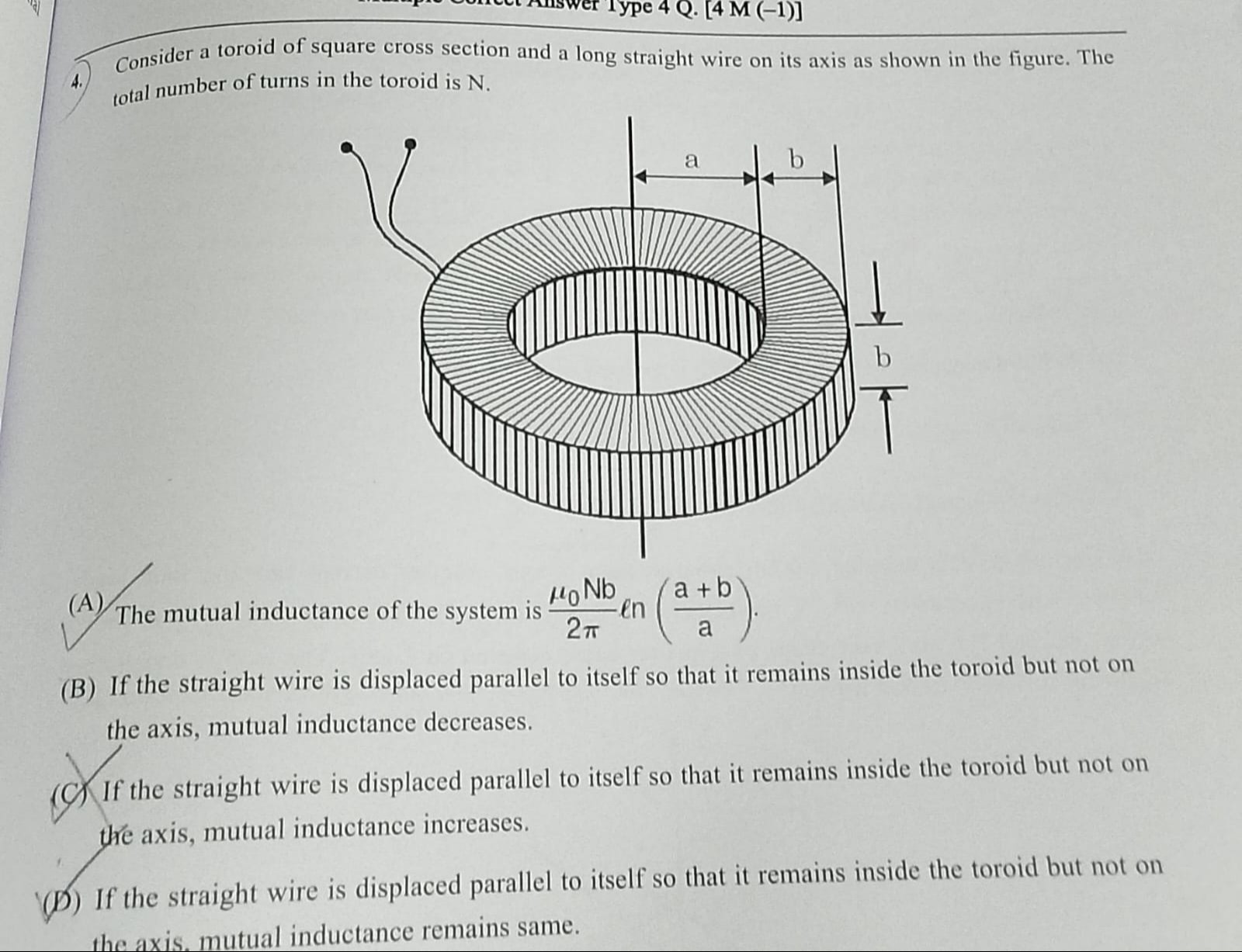Question
Question: Consider a toroid of square cross section and a long straight wire on its axis as shown in the figur...
Consider a toroid of square cross section and a long straight wire on its axis as shown in the figure. The total number of turns in the toroid is N.

The mutual inductance of the system is 2πμ0Nbln(aa+b).
If the straight wire is displaced parallel to itself so that it remains inside the toroid but not on the axis, mutual inductance decreases.
If the straight wire is displaced parallel to itself so that it remains inside the toroid but not on the axis, mutual inductance increases.
If the straight wire is displaced parallel to itself so that it remains inside the toroid but not on the axis, mutual inductance remains same.
The mutual inductance of the system is 2πμ0Nbln(aa+b).
Solution
The magnetic field from the wire is B(r)=2πrμ0I. The flux through a strip of thickness dr and height b is dΦ=B(r)⋅(b⋅dr)=2πrμ0Ibdr. Integrating from a to a+b gives the total flux through the cross-section: Φcross-section=∫aa+b2πrμ0Ibdr=2πμ0Ibln(aa+b). The mutual inductance is M=INΦcross-section=2πμ0Nbln(aa+b). When the wire is displaced, the average distance from the wire to the toroid increases, decreasing the magnetic field and flux linkage, thus decreasing mutual inductance.
